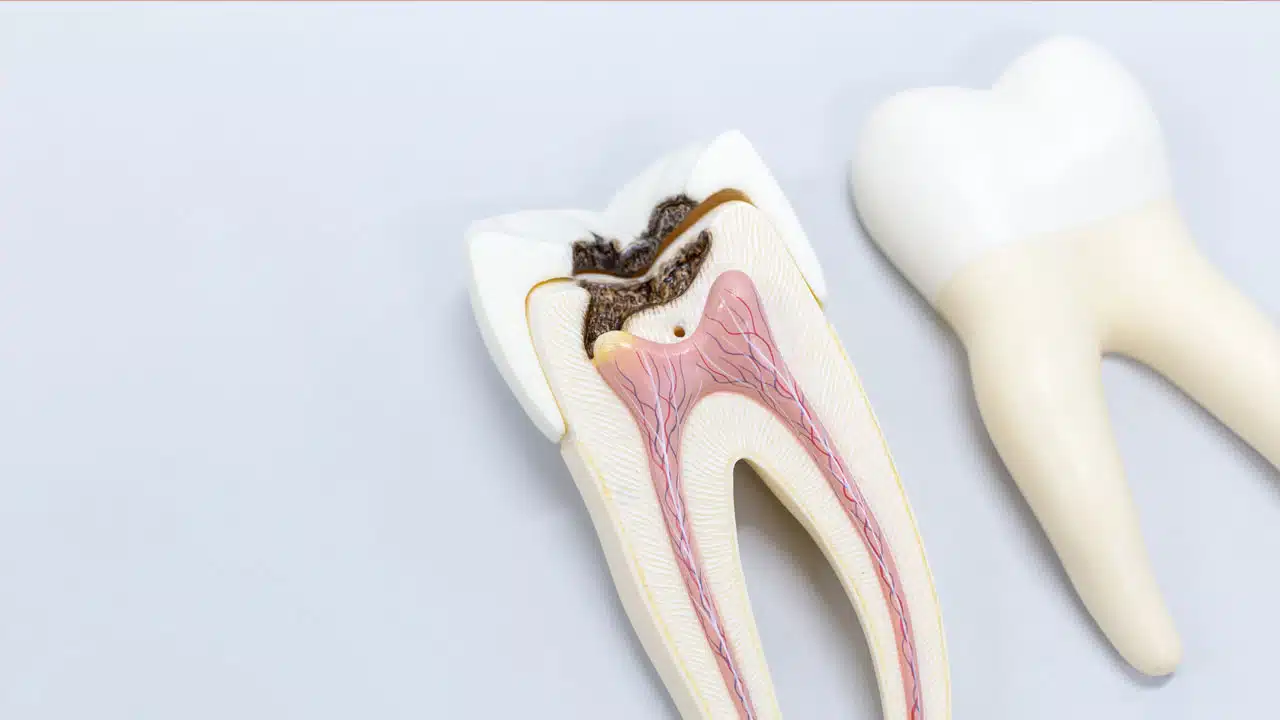
A root canal treatment is a standard dental procedure to remove the infected or damaged pulp inside a tooth and preserve the remaining healthy structure. However, sometimes, a root canal may fail, and retreatment may be necessary.
Root canal retreatment involves removing the crown or filling and the sealant material. Then re-cleaning the root canals and repacking and re-crowning or filling the tooth.
Root canal therapy and retreatment are effective when the tooth has good bone support and healthy gums beneath it. The success rate for retreatment is around 85% after six years, and it is less expensive than dental implants or bridgework.
Root Canal Failure Symptoms
Common symptoms of root canal failure can include:
- Sensitivity in the affected tooth
- Swelling of the gum tissue surrounding the tooth
- Discharge from the gums
- Unresolved pain months or years after initial treatment
- A pimple-like bump on the gums
- Sinus problems if the root canal was performed in the upper jaw
- Irregularities in your routine X-ray
- Increased tooth mobility
Why You May Need Root Canal Retreatment
There are several reasons why your root canal may have unexpectedly failed, including:
1. Undetected or Inaccessible Canal
During a root canal treatment, your dentist may miss one or more canals if they are difficult to access. This prevents them from adequately cleaning, sterilizing, and filling the canal.
If a root canal has complicated anatomy, it may have gone undetected in the first procedure, meaning there is still bacteria in the canal causing inflammation or infection. This can also occur if a root canal is narrow or curved, making it inaccessible and complicated to treat.
2. New Decay
Even after a successful root canal treatment, new decay can develop in the tooth, especially if the restoration isn’t sealed correctly. In teeth with multiple roots, such as premolars and molars, you may develop new decay in one of the untreated canals that can spread to a treated root canal. Decay can compromise the success of the initial root canal treatment, resulting in retreatment.
3. Fractured or Broken Filling or Crown
Poor oral hygiene can cause the tooth structure around the crown to weaken, leaving your crown vulnerable to breakage if you bite something hard or have facial trauma due to an accident. When this happens, bacteria can enter the root canal and cause inflammation or infection, meaning you need retreatment.
4. Salivary Contamination
Your saliva can enter the root if your tooth is inadequately sealed or your root canal has developed cracks or chips. Your saliva contains bacteria, sugars, and acids that can erode the tooth from the inside, leading to re-infection. This can cause inflammation and discomfort, requiring a retreatment procedure.
5. Delay in the Placement of Restorative Devices
In some cases, a permanent filling or crown may not be placed immediately after the root canal treatment. If this happens, the tooth can become reinfected. To avoid this, it’s crucial to have a permanent filling or crown placed as soon as possible after the root canal treatment is completed.
6. Root Canal Retreatment Benefits
One of the key benefits of root canal retreatment is preserving your natural tooth. Unlike dental implants or bridgework, which require the removal of the damaged or infected tooth, retreatment allows you to keep your natural tooth and avoid more invasive and costly dental work.
Should You Get Root Canal Retreatment?
Whether or not you should get root canal retreatment depends on your individual situation and the cause of the initial root canal treatment failure.
If you are experiencing pain or discomfort in a tooth, Valley Dental Care of Plainfield offers a comprehensive menu of dental services to assist you in maintaining your oral health. Contact us at (815) 436-6800 to schedule an appointment.